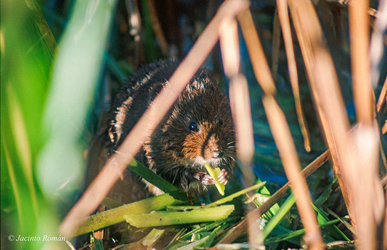Temporal variability in primary productivity can change habitat quality for consumer species by affecting the energy levels available as food resources. However, it remains unclear how habitat-quality fluctuations may determine the dynamics of spatially structured populations, where the effects of habitat size, quality and isolation have been customarily assessed assuming static habitats. The first empirical evaluation on the effects of stochastic fluctuations in primary productivity—a major outcome of ecosystem functions—on the metapopulation dynamics of a primary consumer is presented. A unique 13-year dataset from an herbivore rodent was used to test the hypothesis that inter-annual variations in primary productivity determine spatiotemporal habitat occupancy patterns and colonization and extinction processes. Inter-annual variability in productivity and in the growing season phenology significantly influenced habitat colonization patterns and occupancy dynamics. These effects lead to changes in connectivity to other potentially occupied habitat patches, which then feed back into occupancy dynamics. According to the results, the dynamics of primary productivity accounted for more than 50% of the variation in occupancy probability, depending on patch size and landscape configuration. Evidence connecting primary productivity dynamics and spatiotemporal population processes has broad implications for metapopulation persistence in fluctuating and changing environments. informacion[at]ebd.csic.es: Fernández et al (2016) Variability in primary productivity determines metapopulation dynamics. Proc R Soc B 283: 20152998
http://dx.doi.org/10.1098/rspb.2015.2998

 Las altas temperaturas están provocando que las lagunas y las marismas de Doñana pierdan agua rápidamente
Las altas temperaturas están provocando que las lagunas y las marismas de Doñana pierdan agua rápidamente




